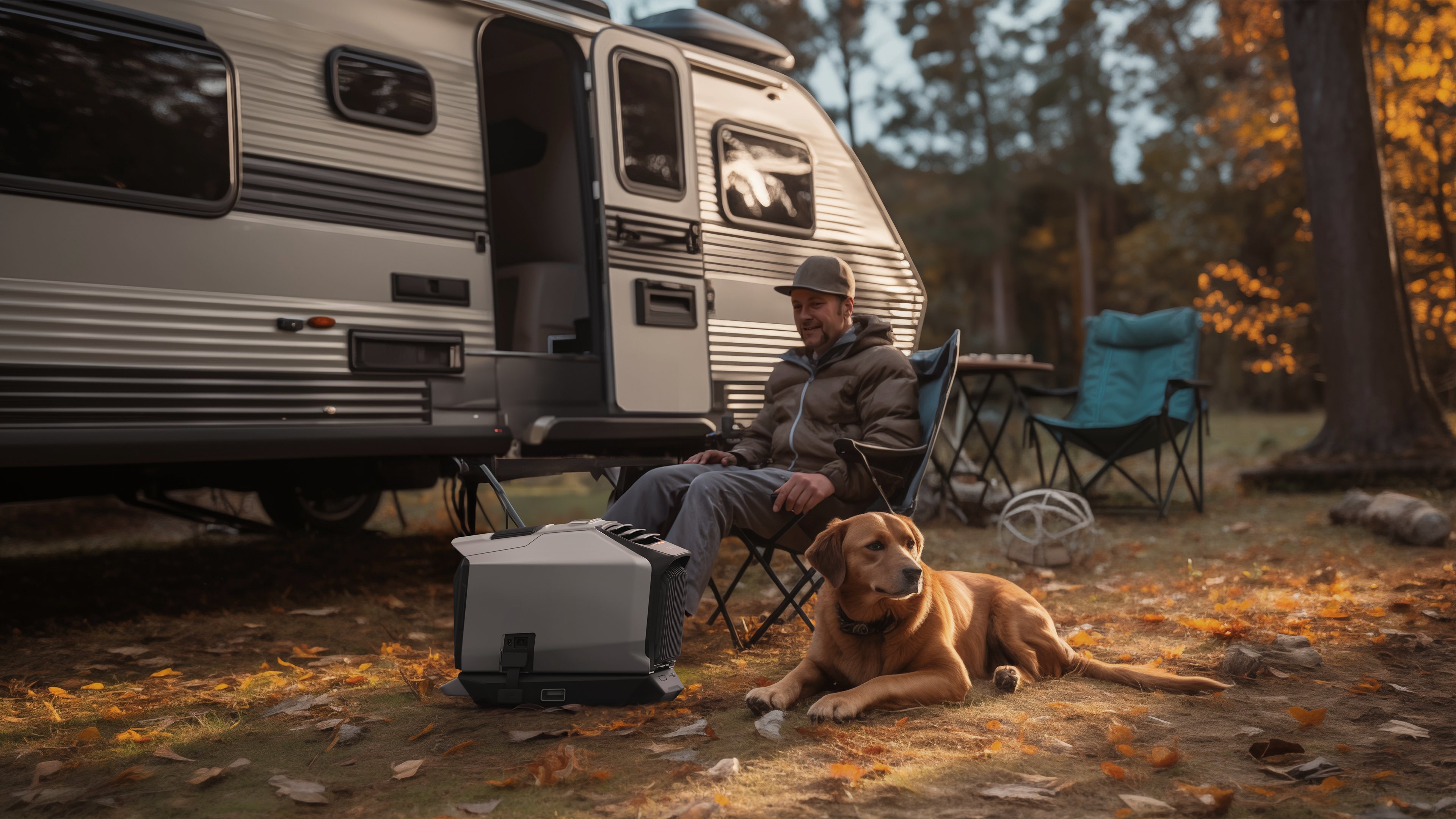- Sine Waves: The Basics
- What Is a Sine Wave?
- Why Sine Waves Matter for Your Electronics
- How Full Sine Wave Inverters Work
- The Basic Conversion Process
- Advanced Circuitry and Components
- Filtering and Waveform Smoothing
- Advantages of Full Sine Wave Inverters
- Prevents Damage to Electronics with Microprocessors
- Improves Performance of Motor-Driven Appliances
- Reduces Electrical Interference
- Works with All Standard AC Devices
- Applications of Full Sine Wave Inverters
- Off-Grid Solar Home Systems
- RV and Boat Power Systems
- Home Backup Power
- Small Wind and Hydro Systems
- Portable Power Stations
- Switch to Pure Sine Wave Power!
Full Sine Wave Inverter: Everything You Need to Know
- Sine Waves: The Basics
- What Is a Sine Wave?
- Why Sine Waves Matter for Your Electronics
- How Full Sine Wave Inverters Work
- The Basic Conversion Process
- Advanced Circuitry and Components
- Filtering and Waveform Smoothing
- Advantages of Full Sine Wave Inverters
- Prevents Damage to Electronics with Microprocessors
- Improves Performance of Motor-Driven Appliances
- Reduces Electrical Interference
- Works with All Standard AC Devices
- Applications of Full Sine Wave Inverters
- Off-Grid Solar Home Systems
- RV and Boat Power Systems
- Home Backup Power
- Small Wind and Hydro Systems
- Portable Power Stations
- Switch to Pure Sine Wave Power!
Full sine wave inverters allow you to use regular electronics when you're not close to standard power outlets. They convert battery power to the same type of electricity that powers your home, making clean, stable current that won't damage sensitive equipment. In contrast to cheaper inverters, these premium units steer clear of problems like buzzing, overheating, and device performance issues in equipment like computers and medical devices. They're particularly useful for RVs, cabins, solar installations, and as a backup for power outages.
Sine Waves: The Basics
It's helpful to know what sine waves are and why they're useful for your electronics before getting into complete sine wave inverters.
What Is a Sine Wave?
Sine wave is the natural waveform of alternating current (AC) electricity. On a graph, it traces out a smooth flowing curve that rises up to a top positive crest, then falls off through zero and down to an bottom negative crest, then recuperates back up through zero. The cycle runs over and over again.
The electricity produced by utility companies and supplied to homes and offices is of the smooth sine wave variety. In the continent of North America, the wave travels at 60 cycles per second (60 Hertz), but on most other lands, 50 Hertz is dominant.
Why Sine Waves Matter for Your Electronics
Your electronics are designed for this smooth power supply. Most modern electronics have components that rely on the expected smooth oscillation of a pure sine wave. Some examples include timing circuits, microprocessors, and power supplies that rely on the standard waveform for operation.
With the use of clean sine wave power, devices also work well—the right speeds, keeping time adequately, and never generating heat and noise accumulation. This harmony in power supply and device design realizes maximum performance and lifespan for your electronics.
How Full Sine Wave Inverters Work
Full sine wave inverters convert battery power into clean electricity that matches utility power through a straightforward process enhanced by modern electronics.
The Basic Conversion Process
At its core, a full sine wave inverter takes steady DC power from batteries and transforms it into alternating current. The inverter uses electronic switches to rapidly change the direction of electricity flow, creating the alternating pattern needed for AC power. A transformer then increases the voltage from battery level (typically 12V, 24V, or 48V) to household standard (120V or 240V).
Advanced Circuitry and Components
What sets quality inverters apart is their electronic design. Full sine wave inverters use efficient switching components (MOSFETs) controlled by microprocessors. These microprocessors direct the switches using Pulse Width Modulation (PWM) - a technique that creates a series of precisely timed pulses that, when combined, form the foundation of a sine wave.
Filtering and Waveform Smoothing
The final stage removes any roughness from the power signal. Special components called inductors and capacitors work together to smooth out the electrical pulses into a clean sine wave. Better inverters use higher quality filtering components to produce power that's virtually identical to what comes from your wall outlets.
This three-stage process ensures your sensitive electronics receive the same quality power they would from utility electricity, without the spikes or irregularities that can damage equipment.
Advantages of Full Sine Wave Inverters
Full sine wave inverters cost more than modified sine wave models, but offer several important benefits that make them worth considering.
Prevents Damage to Electronics with Microprocessors
Devices with circuit boards and microprocessors work best with clean power. Full sine wave inverters provide the right type of electricity for:
Computers and laptops
Medical equipment like CPAP machines
TVs and gaming systems
Digital cameras and smartphones
These devices run properly with full sine wave power, without the buzzing sounds from speakers or flickering screens that can happen with lower-quality inverters.
Improves Performance of Motor-Driven Appliances
Appliances with motors work better when powered by full sine wave inverters. Refrigerators, fans, and washing machines run cooler and use less electricity. The motors experience less strain, which means they'll likely last longer before needing repairs. Power tools maintain consistent speed and power, giving you better results whether you're drilling, sawing, or sanding.
Reduces Electrical Interference
Full sine wave inverters produce electricity with lower Total Harmonic Distortion (THD), which is a technical way of saying the power is cleaner and more stable. This cleaner power prevents problems like static on radios or interference with Wi-Fi networks when multiple devices are plugged in at the same time.
Works with All Standard AC Devices
Perhaps the biggest practical advantage is reliability. Full sine wave inverters work with virtually any standard AC-powered device, which means you won't have to worry about compatibility issues.
Applications of Full Sine Wave Inverters
Full sine wave inverters serve a variety of practical purposes across different settings. Here are the main ways people use these versatile power conversion devices.
Off-Grid Solar Home Systems
Full sine wave inverters are a crucial component in solar power systems for homes and cabins located beyond utility lines. They convert the DC electricity stored in battery banks into standard AC power that runs regular household appliances. With a properly sized system, you can power everything from refrigerators and washing machines to computers and entertainment systems without compromising performance.
Many full-time off-grid residents choose full sine wave inverters specifically because they need reliable power for their complete range of modern appliances, including sensitive electronics and medical devices.


RV and Boat Power Systems
Travelers in RVs, vans, and boats rely on full sine wave inverters to create a home-like power experience while on the move. These inverters convert power from the vehicle's battery system (often charged by solar panels or the engine alternator) into clean AC electricity.
This setup allows you to run laptops, TVs, kitchen appliances, and even small air conditioners without needing to connect to shore power or run a noisy generator. The clean power ensures sensitive electronics work properly without interference or damage from power fluctuations.


Home Backup Power
During power outages, full sine wave inverters connected to battery systems provide seamless electricity to essential devices. Unlike generators, they operate silently and can power sensitive equipment like computers, internet routers, and medical devices without risk of damage.
Many homeowners use these inverters as part of whole-house backup systems or smaller setups dedicated to keeping critical circuits powered during emergencies.
Small Wind and Hydro Systems
For off-grid properties with access to wind or flowing water, full sine wave inverters convert the variable DC output from wind turbines or hydroelectric generators into standard household AC power. These renewable energy systems typically charge batteries as an intermediate step, then use the inverter to supply stable power regardless of wind speed or water flow variations.
Portable Power Stations
Compact all-in-one units combining batteries, inverters, and charging systems have become popular for camping, outdoor events, and emergency preparedness. The better models use full sine wave inverters to ensure compatibility with all types of devices, from smartphones and laptops to small appliances and medical equipment.
Switch to Pure Sine Wave Power!
Quality full sine wave inverters preserve your sensitive devices and keep the efficiency of your appliances when traveling away from normal outlets. Even more expensive initially, they save damage, reduce interference, and work with all standard equipment. To have trusted power in off-grid homes, RVs, or emergency power, investing a bit more on a full sine wave inverter is an investment that continues to pay dividends in the form of longer equipment lifespan and trouble-free use.